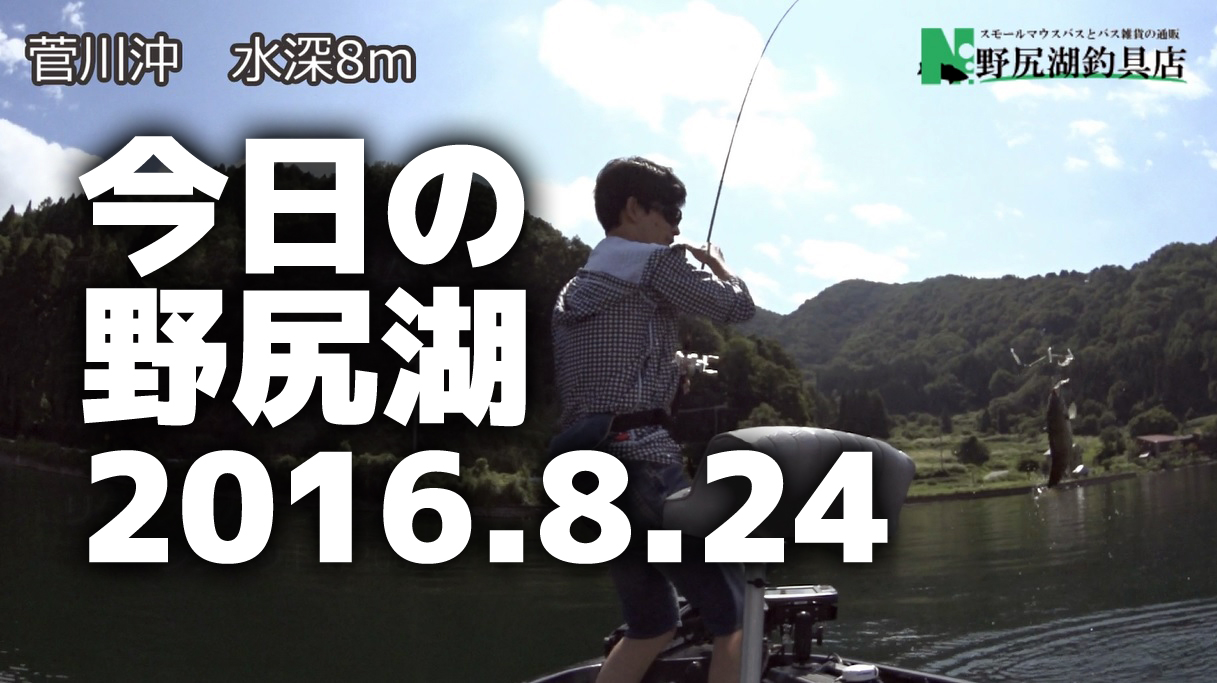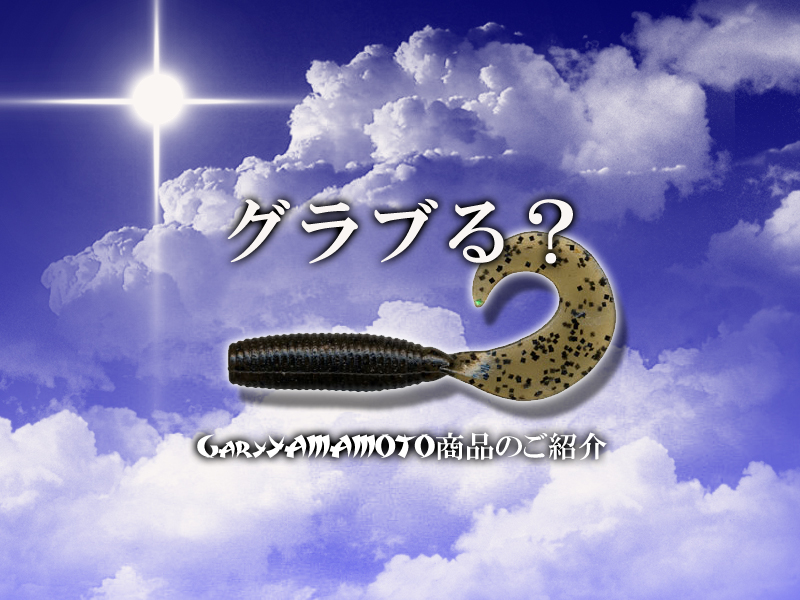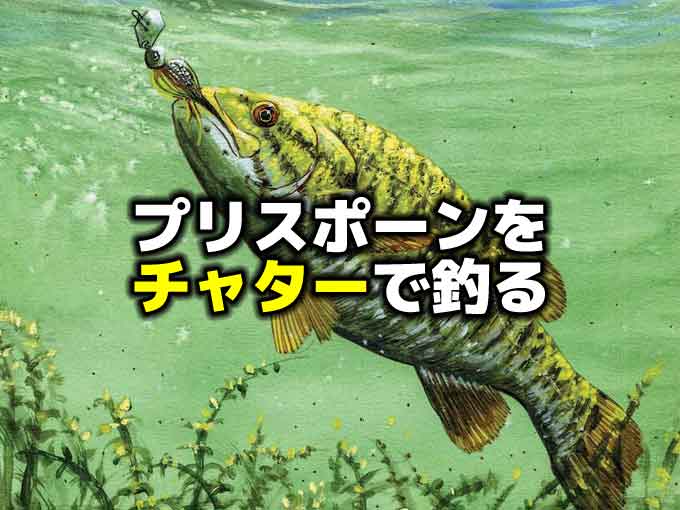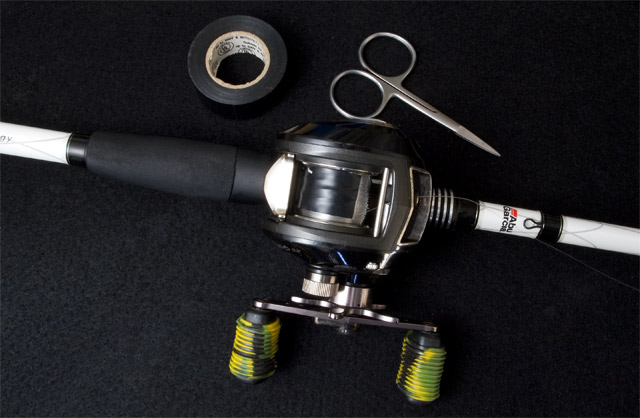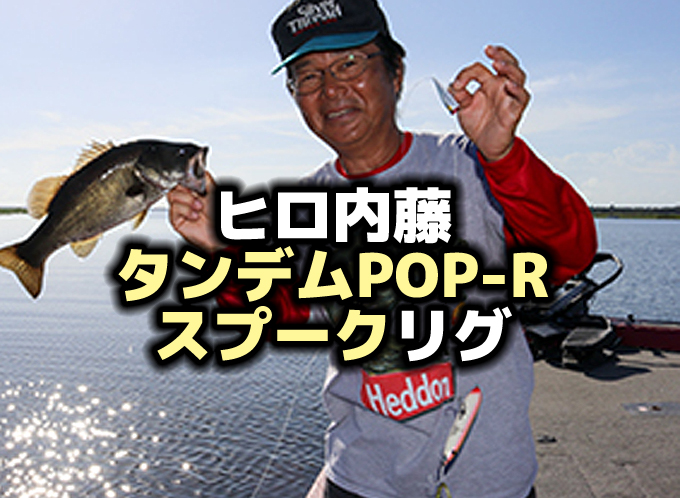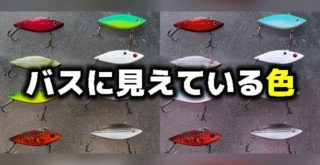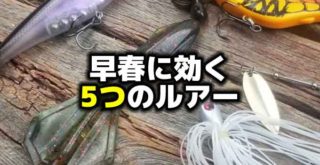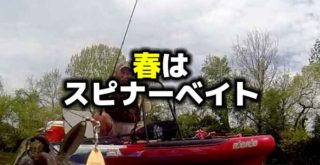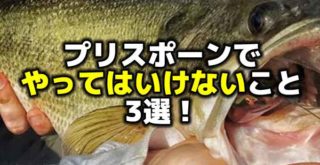スモールマウスをクランクで釣る!?
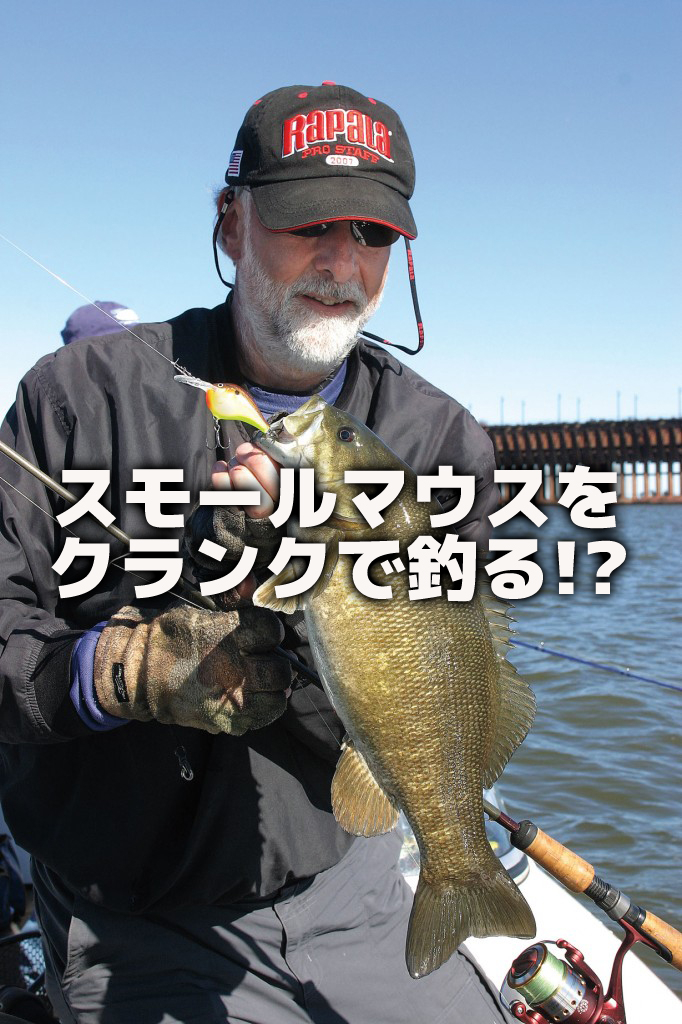 photo by In-Fisherman
photo by In-Fisherman
 こんにちは!
こんにちは!
今日は海外サイトに「スモールマウスバスをクランクベイトで釣る」記事が書かれていたので引用して紹介するよ!
引用先:In-Fisherman"Using Crankbaits For Smallmouth Bass"by | January 31st, 2016(海外サイトです)
スモールマウスバスをクランクベイトで釣るっていうのは、野尻湖や木崎湖でのパターンとしてはあまり聞かないよね。でも桧原湖のハンプエリアでのディープクランクパターンは結構有名だし、野尻湖でも岬の先端を輪切りにして通すディープクランクパターンや、レイダウンやロック地帯をクランクで攻めるカバークランキングエビパターンなんかは聞いたことがあるから、クランクベイトっていうルアー自体は有効なのかもしれないね!あとは使い時と使いどころ…って感じかな!?
海外のパターンなのでどれくらい参考になるかはわからないけど、興味があれば読んでみてくださいね♪
どんなタイプのクランクを使う?
引用
“I do two types of cranking on Lake Erie,” Balog says. “The first is traditional—dig the bottom, bang around, shallow stuff. That’s in spring, during prespawn when water temps range from 42°F degrees through the spawn (58°F to 64°F). Bass are killing two birds with one stone at this point, feeding on every crawfish, perch, and goby they can find, which also rids the shallow spawning areas of these nest raiders. Bass are aggressive until heavy fishing pressure backs them off. Then they get a little more finicky.
“The depths we’re targeting are 2 to 8 feet. For that reason, standard ‘bass’ crankbaits are fine—Bandit 300s, Bombers 6A’s, Strike King Series 3—smaller mid-depth baits that rattle and have a wide wobble. The only modification I make is to switch hooks to #4 Gamakatsu trebles. It’s about covering water this time of year and finding the right depths. My go-to patterns are realistic perch or crawfish imitations, fire tiger, and those built around red or orange over gold.”
「私は、エリー湖(北アメリカ5大湖のひとつ。北海道の札幌と同じくらいの緯度にある)では2つのタイプのクランクベイトを使います」とバロッグ(アメリカのトーナメントプロ)は言います。「ひとつは伝統的な、ボトムを叩き、周囲に音を響かせる、シャロー用。それは春、水温が5.5℃くらいのプリスポーンから、スポーニング期(14℃~18℃)に変動する間です。バスはこの点において一石二鳥を得ています。シャローにいるザリガニ、パーチ、ハゼ類を見つけては捕食しつつ、自分のネストへの侵略者を除去しているのです。バスは強いフィッシングプレッシャーがなくなるまで攻撃的です。それからは少し気難しくなります。」
「我々が目標としている水深は2~8フィート(0.6~2.5m)です。ということでスタンダードなクランクベイト「バンディット300’s、ボーマー6A、ストライクキング・シリーズ3がラトル音とワイドウォブリングの素晴らしいスモール用ミッドクランクです。唯一修正するのが、がまかつ#4トレブルフックに変えることです。それでその時期の水域の適切な水深をすべてカバーします。私のパターンは、パーチ、ザリガニを模したファイヤータイガーか、赤金、金オレを中心に試します。」
Colors and patterns Balog mentions generally have something to do with the prey smallmouths find in Lake Erie. Matching size or shape can be important at times. Orange seems to be a universal trigger for smallmouths, probably because it suggests their easiest and most prolific source of protein, crawdads. Putting orange spots on cranks with a paint pen, regardless of the underlying pattern, is never a dissuasive element and sometimes garners extra strikes.
バロッグが一般に言及する色とパターンは、スモールマウスバスがエリー湖で見つけるベイトと関係があります。サイズや形を合わせることも重要です。おそらく彼らの最も簡単で最も多産なタンパク源であるザリガニを連想させるため、オレンジはスモールマウスバスの一般的なトリガーとなるようです。根底にあるパターンに関係なく、オレンジ色のマジックペンなどでクランクに斑点を描くことも思いとどまらなければ、時々余分にヒットします。
どんなタックルで使う?
引用
“Most of my fishing, summer into fall, is done with a Rapala DT16 for a couple reasons,” he continues. “It swims with a smooth wobble and casts well. If I can’t throw half the line off my reel when casting a deep diver on the Great Lakes, I won’t use it. Conditions here often are rough and windy. And the DT16 attacks the zone where active smallmouths feed on Erie most of the time.”
「夏から秋の大部分はラパラDT16を2つの理由で使います。」と、彼は続けます「スムーズなウォブリングの泳ぎとキャストです。5大湖でディープダイバーをキャストするとき、リールに巻いたラインの半分を投げることができないならば、私はそれを使いません。ここの状況は、しばしばラフで、風が強いです。そして、活発なスモールマウスバスがほとんどエリー湖でフィーディングする地帯を、DT16は攻撃します。」
In this environment, equipment needs to provide maximum sensitivity and casting distance. “I fish these baits on 10- to 12-pound Sufix Fluorocarbon. I go to 15- when I want to keep the bait higher during a shallow bite, or to 10-pound when I want the bait to dive deeper. I use a Daiwa Steez Flex Lite rod (STZ721MHRBA-FL), a 7-foot 2-inch medium-power graphite stick that tapers like glass, yet retains the speed and hook-setting abilities of graphite. Fishing for 5-pound smallmouths is quite different than fishing for largemouths. I’ve been saying that for years because there’s no doubt in my mind that graphite rods function better for cranking smallmouths than fiberglass ones.
この環境では、タックルは最大感度とキャスティング距離を持っている必要があります。「私は、10~12ポンドのサフィックス・フロロカーボンラインで、これらのルアーを使います。ルアーにより深く潜って欲しいときは10ポンド、ベイトが浅くシャローでバイトがあるうちは15ポンドを使います。ロッドはダイワ・スティーズ・フレックスライトロッドSTZ721MHRBA-FL(日本未発売)、7フィート2インチのミディアムヘビーでグラスロッドのような調子でありながら、素早いフックセットのグラファイトの能力を持ちます。5ポンド(2.2kg)のスモールマウスバスを釣る釣りは、ラージマウスバスの釣りとは全く異なります。グラスファイバーロッドよりグラファイトロッドの方が対スモールマウスバスクランキングに適していると、私は長い間言ってきました。
“On a long cast, glass rods simply never hook the fish. Hooking and fighting big smallmouths aggressively is the key. When big ones jump and come off, the reasons are usually cheap or dull hooks and whippy rods that never hooked the fish. Rarely do I lose a big fish cranking with the right graphite stick.”
「ロングキャストに関して言えば、グラスロッドは単にフッキングしません。アグレッシブなビッグスモールマウスをフッキングし、ファイトすることがキーなのです。そのビッグワンがジャンプしてフックオフした時の理由は、安物のダルいフックを使っていたか、しなやかなロッドを使っていたかです。私はそのグラファイトロッドでビッグフィッシュをバラしたことはありません。」
Graphite locks down, at some point. Fiberglass always seems to provide another quarter inch of give and smallmouths have harder mouths. At the end of ultra-long casts, it makes a difference.
グラファイトはある時点でロックがかかる。グラスロッドはさらに弾力があるため、スモールマウスバスの硬い口にフッキングできません。それは超ロングキャストをしたときほど違いが生じます。
”My reel is a Daiwa Zillion with a 6.3:1 gear ratio,” Balog adds. “I don’t find low-speed ‘power’ reels any more powerful than high-speed ones. Reel grips are great. They really help during long, sweaty or frigid days on rolling decks.”
「リールはダイワ・ギア比6.3:1のジリオンです」とバロッグは付け加えます。「ハイギアのリールがローギアのリールよりパワフルだということを見たことがない。握った感じも素晴らしい。揺れるデッキで汗ばむときも極寒の日も長い間本当に助かる。」
どんなテクニックで?
引用
“If the technique calls for hitting bottom,” Balog says, “like when you’re fishing rockpiles in spring and fall, the sweet spot in the retrieve is where the bait glances off that cover or structure. You want a bait that dives barely to the top of it. You want it deflecting, not digging. The key to deflection is to have it occur quickly and randomly.
「もしボトムを叩くことをテクニックと呼ぶならば」バロッグは言いいます「春と秋に岩場で釣りをするときなど、リトリーブ中のスイートスポットは地形変化やカバーからルアーが離れて見えた瞬間です。そのストラクチャーやカバーのトップにやっと触れるくらいに潜るルアーを使ってください。そこにノックしていくのではなく、逸れていくこと。それも速く、そしてランダムに発生することです。
“I pick areas with some baitfish activity on the screen,” he says. “Marking fish is even better, especially around bait and off bottom. Colors for summer cranking are definitely duller than spring. Natural baitfish patterns excel, ones with pale pearl bellies, blue or green backs, or perch patterns. I throw bright chartreuse patterns now and again just to be sure, because I’ve seen them produce so many times for smallies. Chartreuse is the exception that proves the rule.”
「私は(魚探の)画面に移るベイトフィッシュの動きを見てエリアを決めます。」彼は言います。「特にベイトの周りで底を離れている魚がより良いです。夏のクランキングに使う色は、春の時よりも明らかに鈍いです。ナチュラルベイトフィッシュパターンが優れ、パールベリー、ブルーバックまたはグリーンバック、またパーチカラーがそうです。また多くのスモールを釣り上げるところを見てきたことから、もう一度だけ、確認のために明るいチャートカラーを投げます。チャートリュースはルールにはない、特別な例外です。
The primary retrieve is steady, rod-tip down, covering water. Sometimes Balog plays with speed. “As boring as it sounds, I mainly do a steady retrieve with an occasional pause. Lots of times you can keep that steady retrieve up and ‘feel’ fish around your bait. I’m not sure whether they hit it or you hit them or they’re just disturbing water around the bait, but when I feel any variation, I burn the bait for a few cranks, and that triggers a lot of strikes.
主に一定スピードのリトリーブで、ロッドを下げ、水中を網羅します。時々バロッグはスピードで遊びます。「退屈になってくると、ステディリトリーブにたまにポーズを入れる。ずっとステディリトリーブをしていると、魚がルアーを追ってきていると「感じる」ことがある。本当かどうかはわからない、魚が当たったのかもしれないし、あなたが当たったのかもしれないし、ルアーの周りには水で妨害されているのだから。ただどんな形であれ何か感じた時、数個のクランクのバーニング(ジャーキング)を試しますし、それが多くのストライクを誘発します。」
Balog prefers #2 trebles on bigger baits. “XCalibur Fat Free Shads and Strike King cranks work, but my bread and butter is a Rapala DT14 or 16. I occasionally mix in handmade wooden baits without rattles. Some of these have wide wobbles, like a Bagley B, but they swim well and mimic forage. Noise can be one of those factors you need to experiment with.”
バロッグは#2サイズのトレブルフックのついたより大きいルアーを好みます。「エクスキャリバー・ファットフリーシャッドやストライクキングのクランクがよく働きます。しかし私のスポンサー的にはラパラDT14かDT16です。時折、ラトルなしのハンドメイドウッドクランクを組み込みます。これらは(バグリーBのような)ワイドウォブリングを持ちますが、上手に泳いで餌に擬態します。ノイズは、実験の必要がある要因のひとつです。」
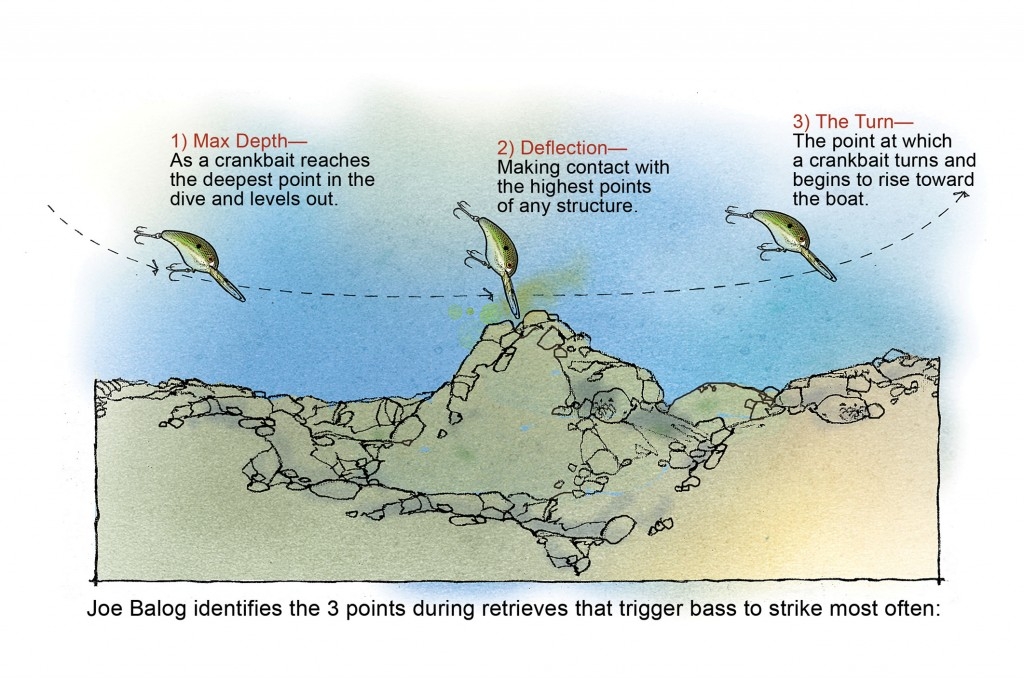 Image by In-Fisherman
Image by In-Fisherman
引用
“When open-water cranking, be aware of three sweet spots,” Balog says. “The first one occurs as the crank hits maximum depth and levels out. A second sweet spot occurs when it begins rising back to the boat. When that bait is digging, digging, nose down, then turns nose up and comes back toward the boat, a ton of fish hit it right then. They think it’s a baitfish heading for the surface to get away. Also, when a crank contacts a high point on structure, bass tend to bite. Pay attention for variation in the wobble of the crank at those points in the cast—max depth and coming back up, and contacting the top of a structure.”
「オープンウォーターのクランキングをしている時、3つのスイートスポットに気付きます。ひとつは、クランクが最大深度に到達して水平に移動し始めた時。第2に、それがボートのそばで上へ上がりはじめるとき。ルアーが鼻先を下げボトムを叩いて叩いて、転じて鼻先を上に上げてボートへ戻るとき、多くの魚はヒットしてきました。彼らはベイトフィッシュが頭を水面の方へ向けて逃げると考えるのでしょう。また、地形変化のてっぺんにクランクがコンタクトした時、バスがバイトする傾向があります。キャストしたらクランクのウォブリングを感じつつ・・・最大深度まで潜ったとき、ボートに戻ってくるとき、そして地形変化のてっぺんにコンタクトした時に注意を払ってください。」
どんなときに?
引用
Conditions play a role in determining when to crank. “Wind is not a major factor,” Balog says. ” And I like sunny days. The crankbait bite on the Great Lakes usually dies on dark, overcast days, when we generally do better with drop-shot rigs.
どんな状況でクランクの役割が果たせるのか。「風は主な要因ではありません」彼は言う。「そして陽がさんさんと降りそそぐ晴れの日が好きです。五大湖では暗く曇りの日にクランクベイトのバイトはなく、ドロップショットリグがうまく行きます。」
“Smallmouths can be triggered by repeatedly casting to the same area and speeding the retrieve,”
「同じエリアで繰り返しキャストし速いスピードでリトリーブすることがスモールマウスバスのトリガーとなります。」
“They’re often barely hooked, though. After catching one fish, you can generally catch several more on the same cast and retrieve. Getting the first one to bite is the key. Crankbaits generally produce fewer strikes, in general, than drop-shot rigs and tubes during summer, but the average bass is much larger.”
やっと一匹が掛かったとします。しかしその一匹の後、同じ釣り方でキャスト&リトリーブをしていれば、通常はいくつかの魚をキャッチすることができます。最初の一本がカギです。一般的に、夏の間はドロップショットリグの方がクランクベイトよりたくさんのストライクを生み出します。しかしクランクベイトのバスは平均的に非常に大きいのです。」
まとめてみると…
 読んでみると、やっぱりスモールマウスバスのクランクベイトの考え方は、ラージマウスバスとはちょっと違うっていう感じがするよね!
読んでみると、やっぱりスモールマウスバスのクランクベイトの考え方は、ラージマウスバスとはちょっと違うっていう感じがするよね!
長かったのでちょっとまとめてみると・・・
春
- 水温5.5℃~18℃
- 水深0.6~2.5mのスポーニングエリア
- ラトル入りのワイドウォブリングなクランク(バンディット300’s、ボーマー6A、ストライクキング・シリーズ3など)でボトムを叩く。
- 色はファイヤータイガー、赤金、金オレ。
夏から秋
- ラパラDT16をフロロ10ポンドで超ロングキャスト。
- この時のタックルはフッキングのことを考えてグラファイトロッド。
- リールはギア比6.3:1くらいのパワー系でパーミングしやすいものがいい。
- 色はナチュラル、パールベリーのブルーバックかグリーンバック。
- チャートカラーも忘れずに
テクニック
- 春と秋、ボトムが岩の場所では、クランクがやっとボトムに届くくらいのものを使う。
- ボトムに当たったら素早く逸らす。
- 魚探に映る良い画像は、人の周りのバスが底から離れているとより良い。
- 基本はステディリトリーブ。飽きてきたらポーズを入れてみる。気配を感じたらバーニング!
- #2のフックのついた大きめクランク(エクスキャリバー・ファットフリーシャッドやストライクキング、ラパラDT14/DT16など)や、ウッド素材のサイレント&ワイドウォブリング系も試してみる。
- オープンウォーターではキャスト~1.最大深度に到達したとき、2.ボートに近づいてクランクが上を向いたとき、3.途中でストラクチャーにヒットした時に集中する。
- 陽がさんさんと降りそそぐ晴れの日にこそクランク
- 同じ場所に何回も投げ、速いスピードでリトリーブする。
- 一本釣れたら同じやり方でいけるはず。
こんな感じだったね♪なんといってもクランクで釣れた魚は大きいっていうのが魅力的だよね!
初めに例として挙げた桧原湖や野尻湖のパターンとはちょっと違う感じだから、試してみてもうまくいかない場合もあると思うし、やってる人が少ないようなら爆発する可能性もあるよね♪
今年でも来年でも、クランクのパターン、試してみてはいかがでしょうか♪
それじゃあ今日はこの辺で!みんな、良い釣りを♪





